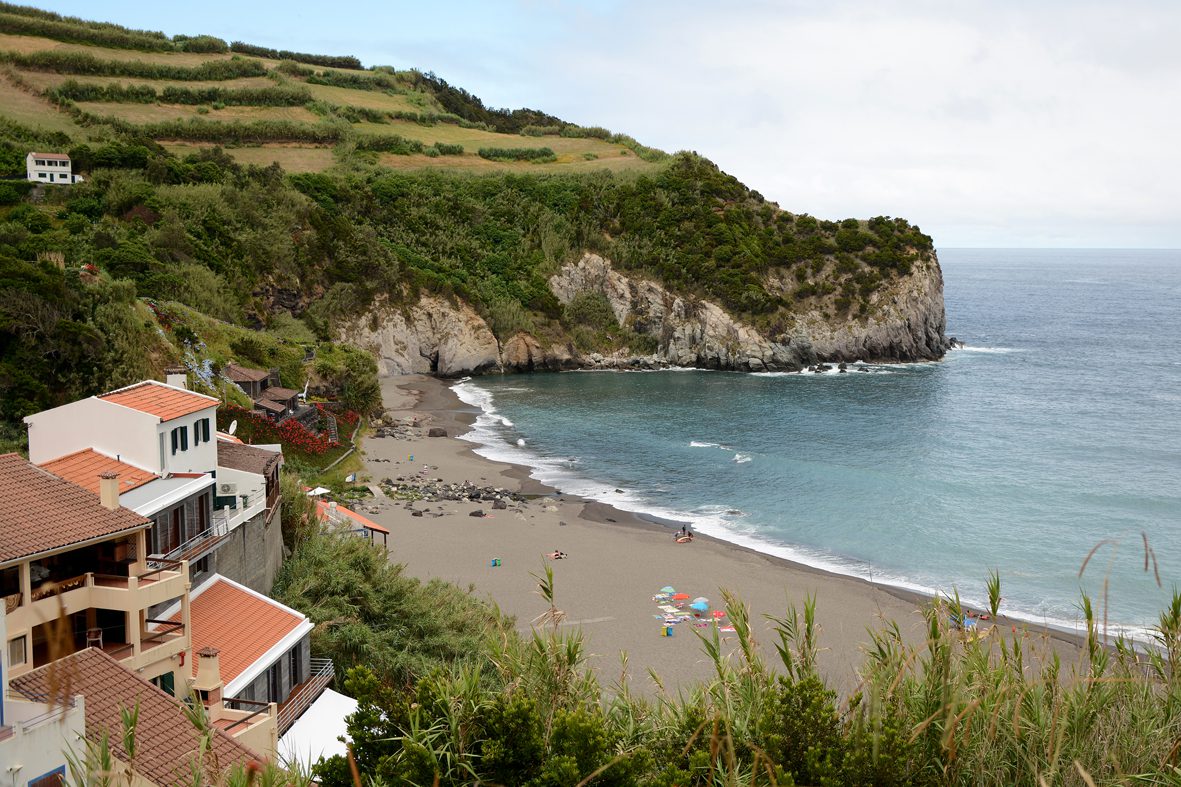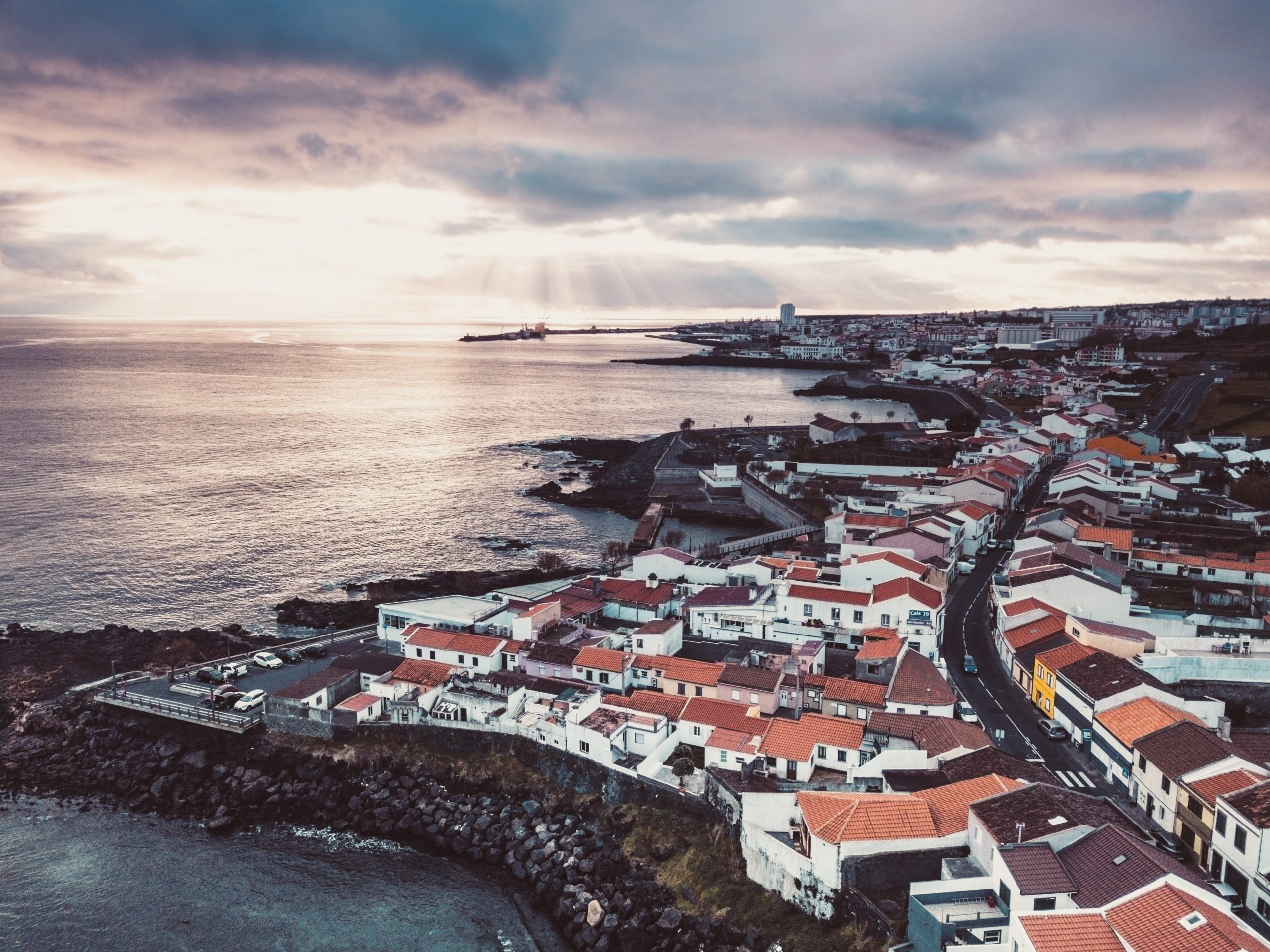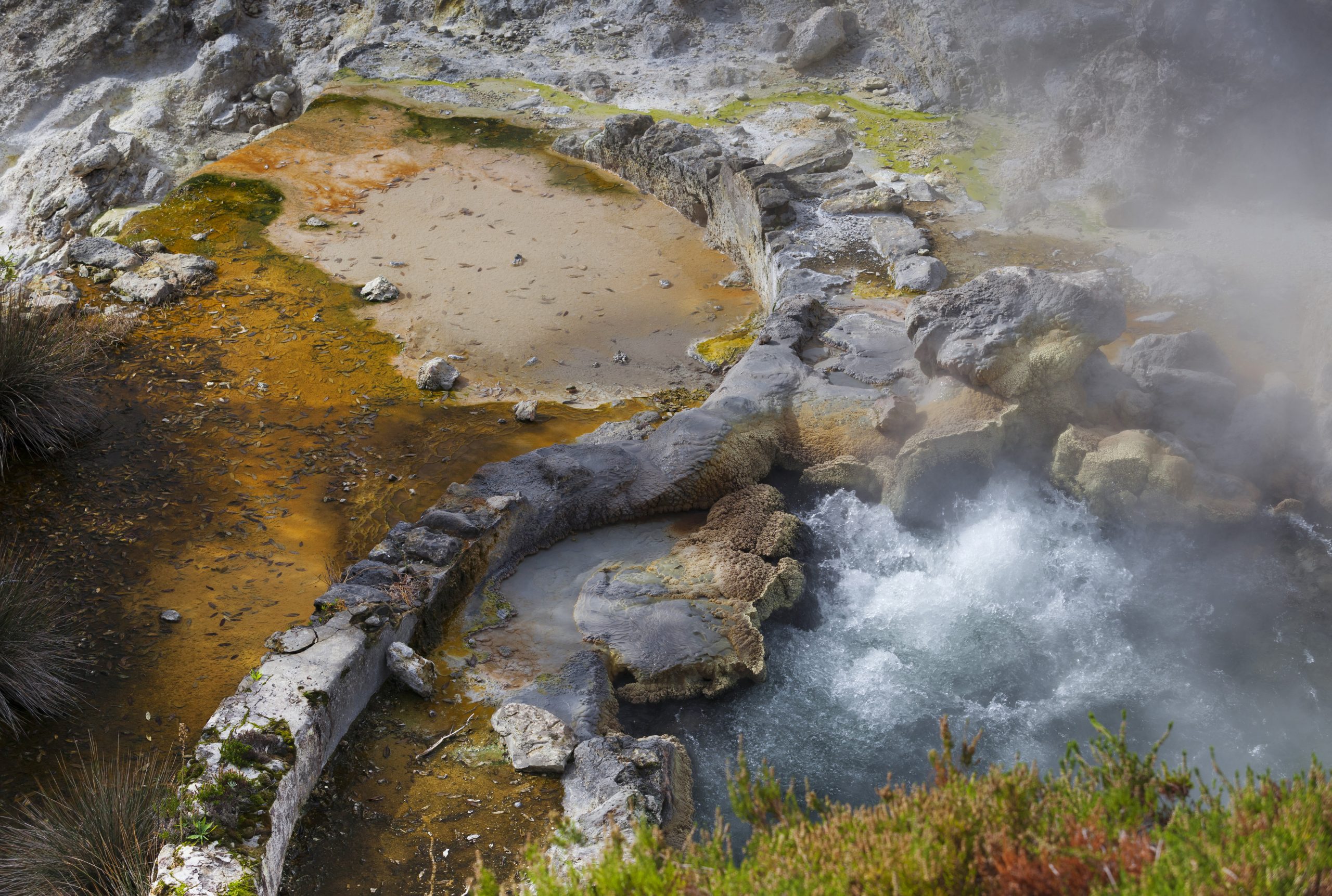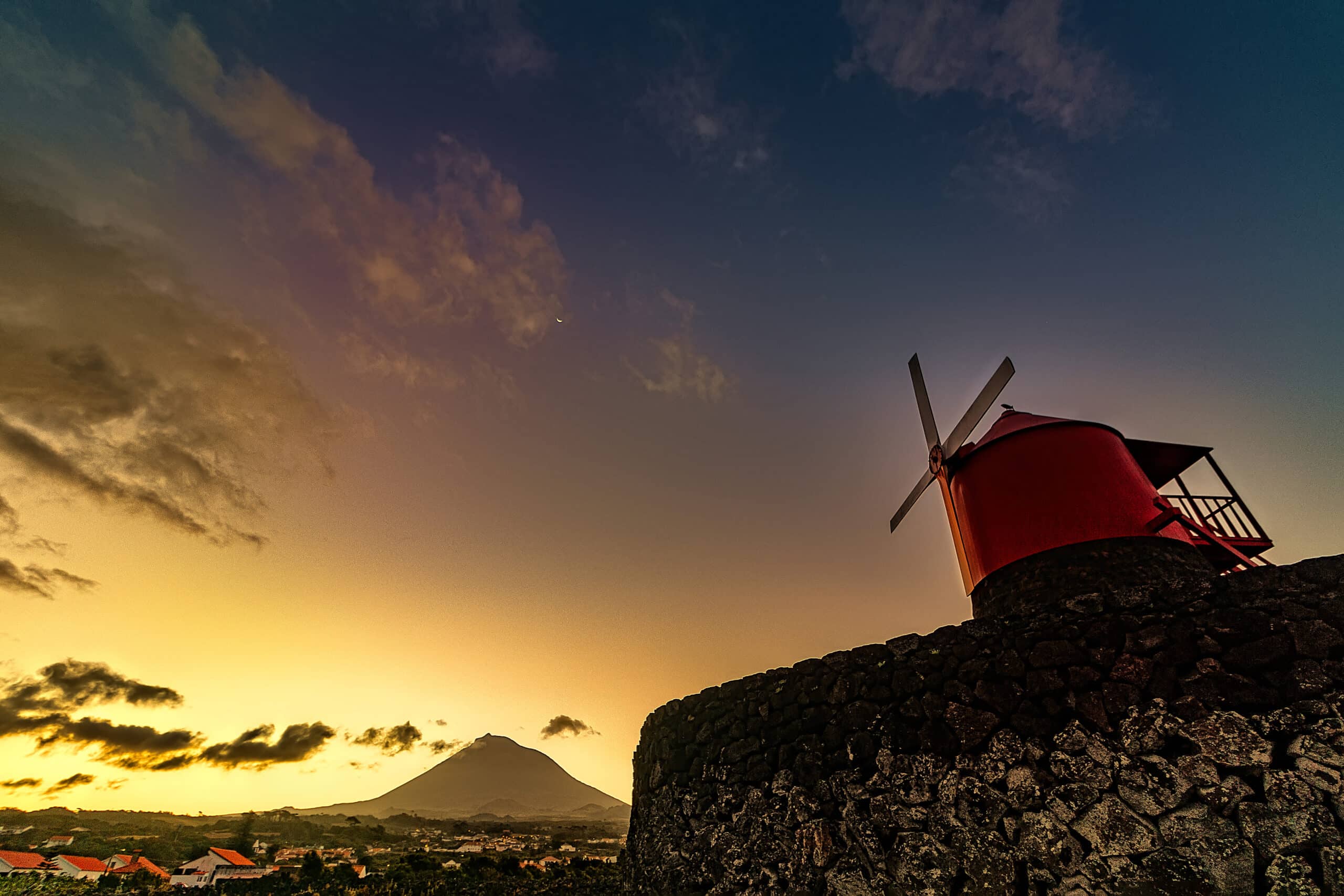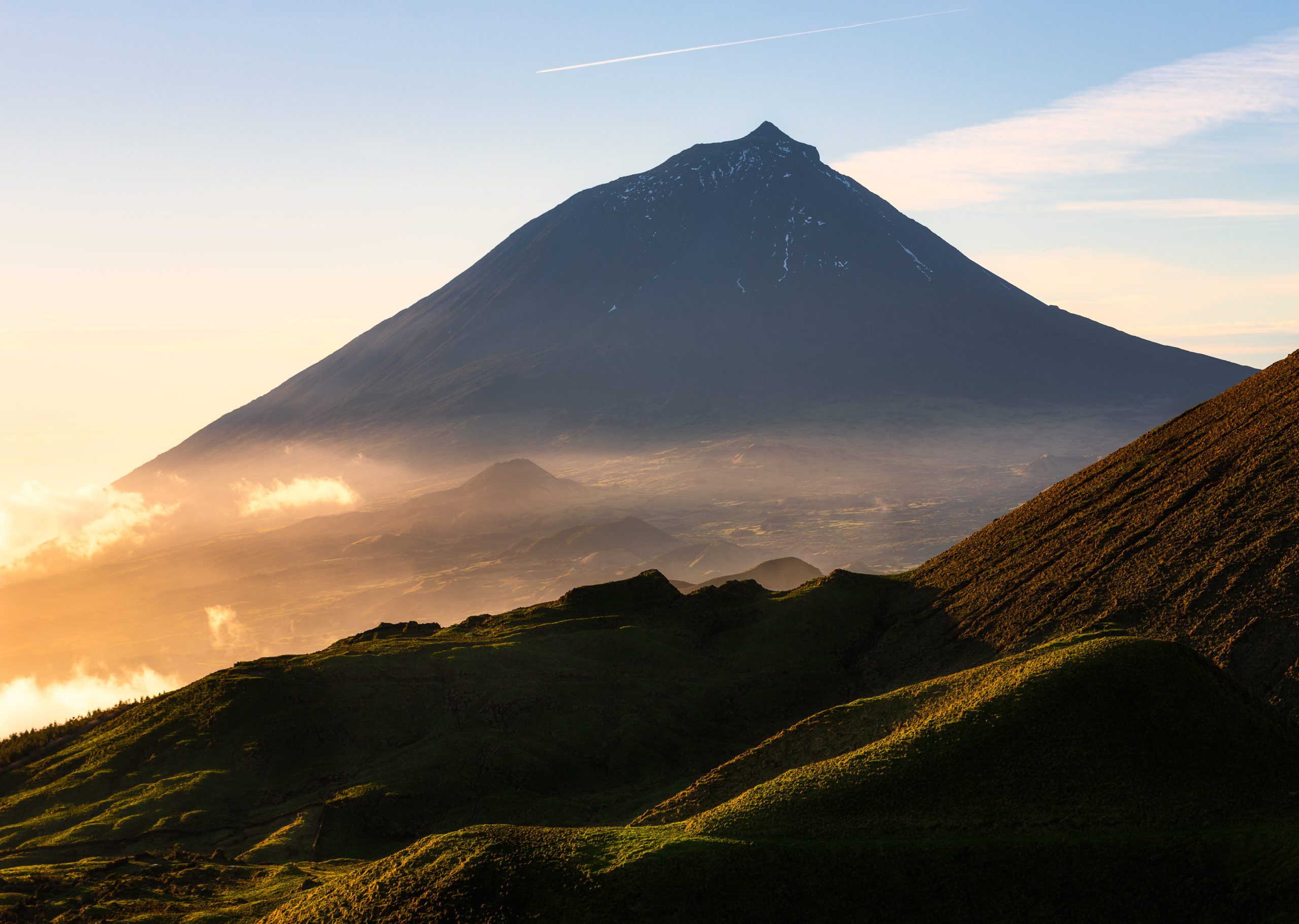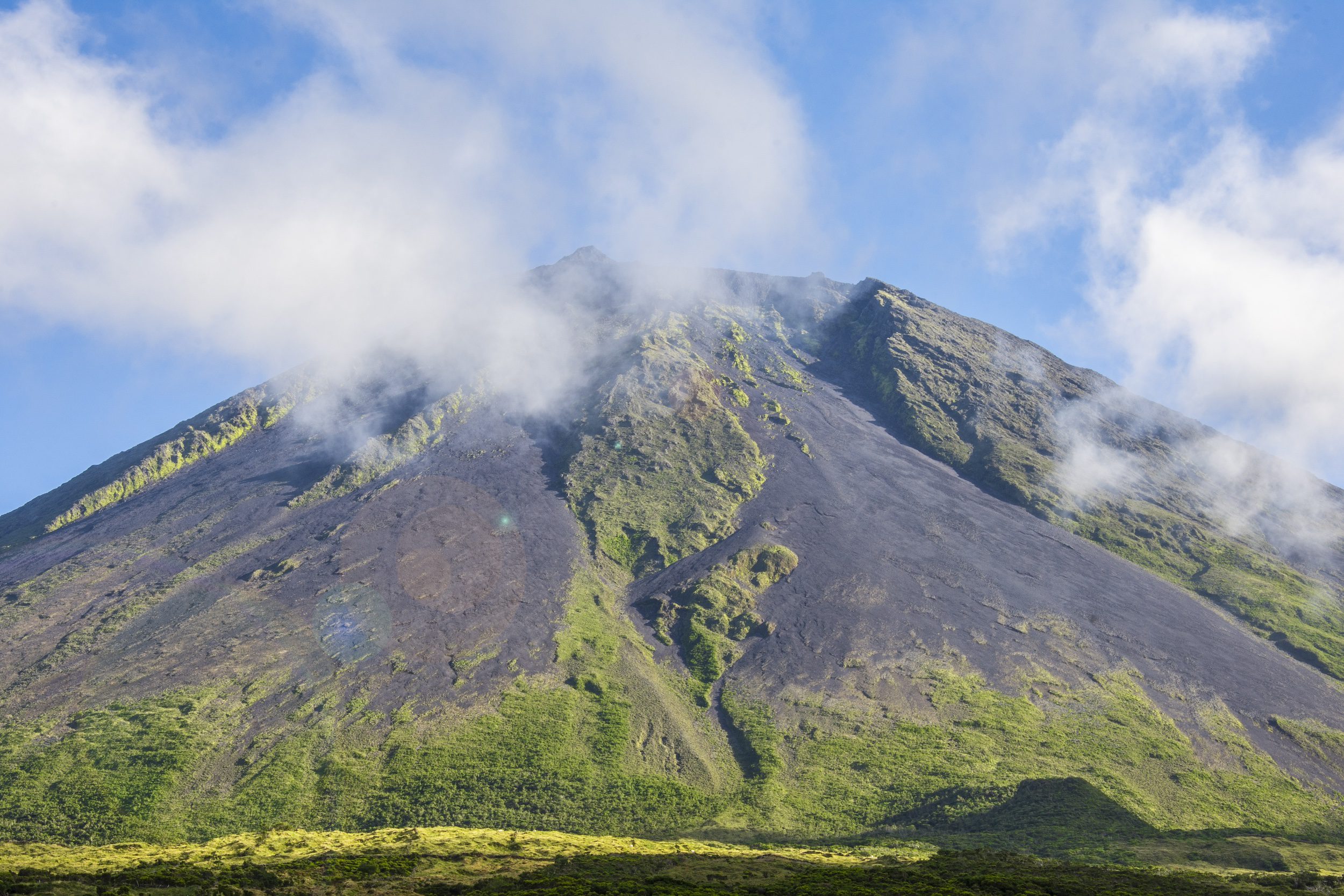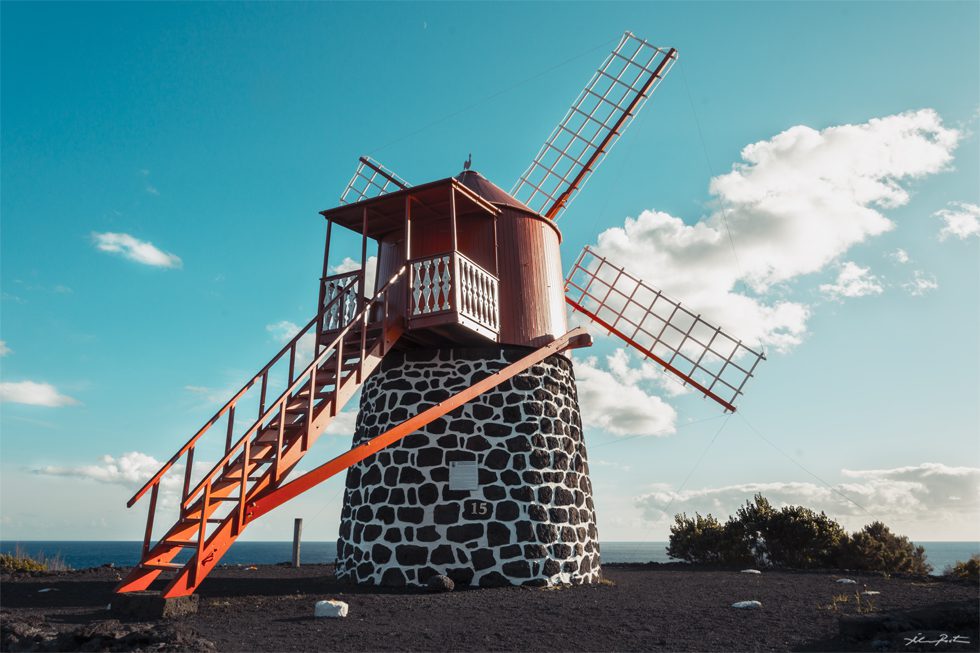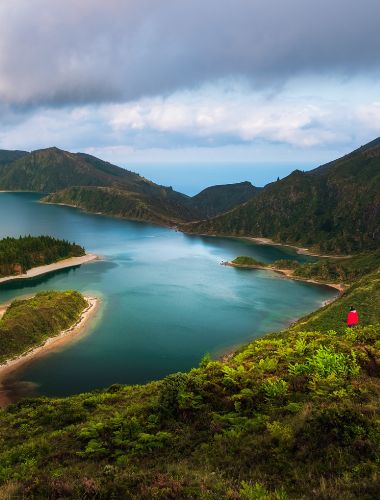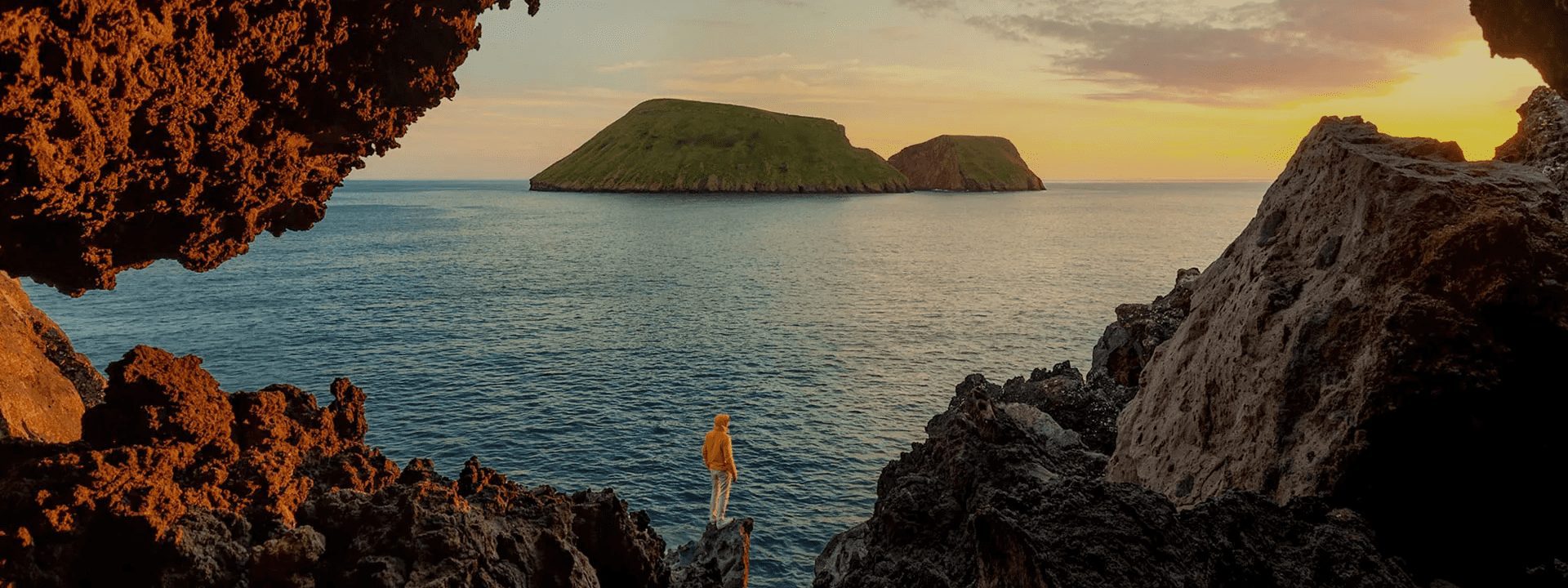On Pico Island, nestled between volcanic vineyards and the smell of the Atlantic, lies Madalena, the wine capital of the Azores. The vineyards are classified as a UNESCO World Heritage Site, stretching across the landscape and a testament to the resilience and creativity of the inhabitants. Protected by black basalt walls, these vineyards produce unique wines shaped by the volcanic soil and ocean breeze.
Madalena is a destination where tradition, culture, and nature intertwine, offering an unforgettable adventure to every visitor. Join us and discover the charms of Madalena and the must-see places that will make your visit to Pico Island memorable!
What is Madalena

Madalena is a Portuguese village located on Pico Island in the Azores Archipelago and is known as the “Capital of Azorean wine”. Recognized internationally for its unique vineyards, it produces high-quality wines, classified as a UNESCO World Heritage Site.
The municipality of Madalena covers 149.08 km² across six parishes. It is bordered to the east by the municipalities of São Roque do Pico and Lajes do Pico. Additionally, this parish is marked by volcanic formations and vineyards that stretch to the sea, providing a unique and charming landscape.
Brief History of Madalena
For centuries, Madalena’s identity has been shaped by wine and the sea. Since the 15th century, locals have tamed the island’s volcanic landscape, building basalt stone walls to protect their iconic vines. By the 18th century, whalers dominated the hunt for sperm whales in the Atlantic. As whaling faded in the mid-20th century, the village reinvented itself, preserving its winemaking traditions and transforming its deep connection with the ocean into a sanctuary for marine conservation and whale watching.
Would you like to know the best times for whale watching?
Take a look at our whale watching calendar and plan your next adventure! Don’t miss the chance to spot these majestic creatures in Azorean waters. 🐋 🌊
Geology and Volcanology
Madalena has volcanic origins, and its landscape reflects this characteristic. The soil is made up of volcanic rocks, contributing to the fertility of the land and the unique quality of the wines produced. Additionally, Pico Mountain, the highest point in Portugal, is a dominant presence in the landscape, offering trails for nature lovers.
Culture and Festivals
Madalena hosts several festivals to celebrate local traditions, featuring processions, music, and traditional dances. Moreover, the grape harvest season is a significant cultural event, where locals and tourists come together to celebrate the grape harvest, further earning Madalena’s reputation as the capital of Azorean wine.
What to Do in Madalena

Discover the History of Wine at the Wine Museum
Step into Madalena’s Wine Museum and uncover centuries of winemaking tradition. Housed in a former Carmelite convent, this museum showcases the tools, techniques, and history behind Pico’s unique vineyards.
Stroll through ancient wine presses, learn about basalt-walled vineyards, and don’t miss the opportunity to taste the island’s famous Verdelho wine!

Hike Through the UNESCO Vineyards of Criação Velha
The landscape protected by UNESCO stretches from Madalena, 15 km into the north coast, and 15 km into the south coast. It is wonderful to stroll around surrounded by those one-of-a-kind vineyards, and meet locals harvesting the grapes.
Moreover, this site offers breathtaking views of Pico Mountain and the Atlantic, a must for wine lovers and nature enthusiasts alike.

Swim in Nature’s Infinity Pools of Criação Velha
Cool off in the crystal-clear waters of Madalena’s natural pools, carved by ancient lava flows. The Criação Velha Natural Pools offer a serene retreat, where volcanic rock meets the Atlantic’s water.
Unwind, soak in the views, and enjoy a peaceful swim in nature’s infinity pools.

Discover Gruta das Torres
Gruta das Torres is more than 5 kilometers long, and these tubes are renowned as Portugal’s biggest lava cave. This cave was formed naturally about 1500 years ago after a volcanic eruption.
Over the 130 lava caves discovered on Pico, Gruta das Torres is the one you don’t want to miss… and guess what, you can visit this wonder of nature safely with a guide!

Climb Pico Mountain
Pico Mountain is the crown jewel of Pico Island, the highest point in Portugal at 2,351 meters. The trail to the summit offers an unforgettable experience for those seeking a challenge. Along the way, you can enjoy breathtaking views of the island and the surrounding Azorean archipelago.
Guided climbs are available to ensure safety and maximize the adventure.
Plan Your Visit to Madalena

How to Get to Madalena
Located on the southern coast of Pico Island, Madalena is easily accessible and offers various transport options for visitors. It is approximately 8.8 km from Pico Island Airport.
You can travel by car, taxi, or even bicycle. Following the main road (ER1), which Google Maps considers to be the best route, the trip takes about 12 minutes by car. Public transport is also available, with a bus route that takes approximately 36 minutes (14 minutes on foot and 22 minutes by bus) via ER1.
Alternatively, if you choose the 10.1 km route via the Airport Access, it will take around 12 minutes by car or 34 minutes by bike. The island also offers beautiful scenic roads that provide an enjoyable ride, with stunning views of the surrounding landscapes, including the impressive Pico Mountain.
Planning a trip to the Azores? These articles will help you: How to Get to the Azores 🗺️ | Azores airports 🛬 | Flights between islands ✈️ | Ferries between islands ⛴️ | Which island to choose? 🏝️ | What airlines fly to the Azores? 🛩️
Best Season to Visit Madalena
Madalena, located on Pico Island, enjoys a mild climate throughout the year. This charming village, known for its volcanic landscapes, unique vineyards, and rich cultural heritage, offers distinct experiences each season. Average temperatures of Madalena:
- Winter (December to February): Lows around 10 °C (ca. 50 °F) and highs near 14 °C (ca. 57 °F).
- Spring (March to May): Lows approximately 12 °C (ca. 54 °F) and highs reaching 16 °C (ca. 61 °F).
- Summer (June to August): Lows near 16 °C (ca. 61 °F) and highs up to 21 °C (ca. 70 °F).
- Autumn (September to November): Lows around 15 °C (ca. 59 °F) and highs near 19 °C (ca. 66 °F).
This consistent climate allows visitors to enjoy outdoor activities such as hiking Pico Mountain, exploring local vineyards, and visiting natural pools year-round. However, summer stands out as the optimal season for aquatic activities, thanks to warmer sea temperatures and sunshine.
For cultural enthusiasts, spring and autumn present traditional festivals and cultural events that showcase the region’s rich history. Additionally, these seasons offer lush landscapes and fewer crowds, providing a more relaxed experience.
Check all our articles about the weather in the Azores throughout the year 🌤️ ☔️: January | February | March | April | May | June | July | August | September | October | November | December
Where to Eat
Click on the following link to find a place to eat near Madalena. It will take you to TripAdvisor, where you can review the 10 best restaurants.
Where to Stay
To make your life easier, we’ve filtered the search by:
Nearby Attractions

Lajes do Pico
Lajes do Pico, the first settlement on Pico Island before 1460, holds a unique place in Azorean history. The Atlantic Ocean surrounding Lajes do Pico proved to be more than just a challenge — it was a blessing. Its abundant marine life provided significant economic opportunities, particularly in the 19th century, when it turned to whaling, a practice that became central to their livelihood and culture.
→ Check out these related articles: History of Whale Watching in the Azores | Whale Watching in Azores: When is the best time?

São Roque do Pico
The village of São Roque do Pico, located on Pico Island, is considered by many to be the capital of rural tourism in the Azores. Like Lajes do Pico, this area was heavily influenced by whaling and the whaling industry in the past.
In this sense, in addition to its significant historical and cultural value, there are many other good reasons to visit one of the archipelago’s most beautiful regions.
→ Check out this related article for more inspiration: 15 Unique Things to do in Pico Island
Complementary Information
Best Season to Visit the Azores
The Azores Archipelago boasts a unique climate that shapes its lush landscapes, making it a splendid year-round destination. With mild temperatures and minimal fluctuations, each season offers something unique. Spring averages 16 °C, summer reaches 21 °C, autumn cools to 18 °C, and winter remains mild at 14 °C.
→ For a detailed breakdown of the weather by month, check the following links 🌤️☔️: January | February | March | April | May | June | July | August | September | October | November | December
How to Get to the Azores
The Azorean Archipelago is easily accessible through numerous flight routes. Lisbon and Porto are the main entry points to the continent, with direct flights available to São Miguel (PDL), Terceira (TER), Faial (HOR), Pico (PIX), and Santa Maria (SMA). To find the best flight, use search engines like eDreams or Skyscanner. These platforms let you compare prices and schedules from multiple airlines in one convenient location.
For more details on how to get to the Azores, take a look at our complete guide. But what if you want to explore beyond your arrival island? We’ve got you covered!
- Azores airports 🛬
- Flights between islands ✈️
- Ferries between islands ⛴️
- Which island to choose? 🏝️
- What airlines fly to the Azores? 🛩️
→ Once you’ve found the perfect route, book your tickets and get ready to experience one of the world’s most stunning island groups!
Travel Essentials
Essential Information for your Azores trip: Azorean Language & Phrases 🗣️ | Currency & Banks 💵 | Credit Cards & Traveler’s Cheques 🏧 | Driving in the Azores 🚗 | Electricity 🔌 | Experiences & Tours 🗺️ | Health & Safety 🩺 | Internet & Wi-Fi Access 🛜 | Phones & Mobile Service 📞 | Post Offices & Buying Stamps ✉️ | Public Holidays 🏖️ | Shopping 🛒 | Time & Daylight 🕒 | Whale Watching Guide 🐳 | Best Island to Visit 🏞️
Useful Tools & Apps
The weather in the Azores can be variable, so it’s helpful to use some apps before visiting the islands. Spotazores provides live camera feeds from the main tourist attractions, allowing you to check the weather and plan your visit. For accurate weather predictions, use Windy or Windguru — they provide the most reliable predictions.
Video
Conclusion
Madalena is a must-visit destination for wine lovers, nature enthusiasts, and those interested in Azorean culture. With its unique vineyards, volcanic landscapes, and rich cultural history, the municipality of Madalena offers a one-of-a-kind and memorable experience for all visitors.
Be sure to plan your trip to take advantage of all the wonders this region and the entire Island of Pico have to offer!
Authors’ Note
I am pleased to inform you that all the recommendations in this article are based on my personal experience and observations. As the author, I have personally visited each attraction mentioned, ensuring that every suggestion is grounded in first-hand knowledge and genuine enthusiasm.
FAQs
Madalena, on Pico Island, is home to UNESCO-listed vineyards. Vines grow in volcanic soil protected by basalt walls. This unique landscape and centuries-old winemaking tradition make it the heart of Azorean wine production, offering exceptional wines with distinctive mineral and salty notes.
Madalena’s mild climate allows year-round visits, but summer (June to August) is ideal for swimming and hiking. Spring and autumn offer cultural festivals and fewer crowds, while winter provides a peaceful atmosphere to explore the region’s volcanic landscapes, vineyards, and rich local traditions.
Visit the Wine Museum, explore Gruta das Torres, swim in natural pools, or hike through UNESCO-classified vineyards. Adventurers must climb Pico Mountain, while scenic trails and breathtaking coastal views make Madalena a perfect destination for nature and culture lovers.
Madalena is 8.8 km from Pico Island Airport. It takes about 12 minutes by car or taxi via ER1. Public buses are available, taking around 36 minutes. Cycling is also an option, offering a scenic route through the island’s volcanic landscape.








